Art & Exhibitions
Artist H. R. Giger Felt He Never Got the Credit He Deserved for His Role in the ‘Alien’ Franchise. A New Show Gives Him His Due
Giger's terrifying vision is the dark fantasy we desperately need right now.
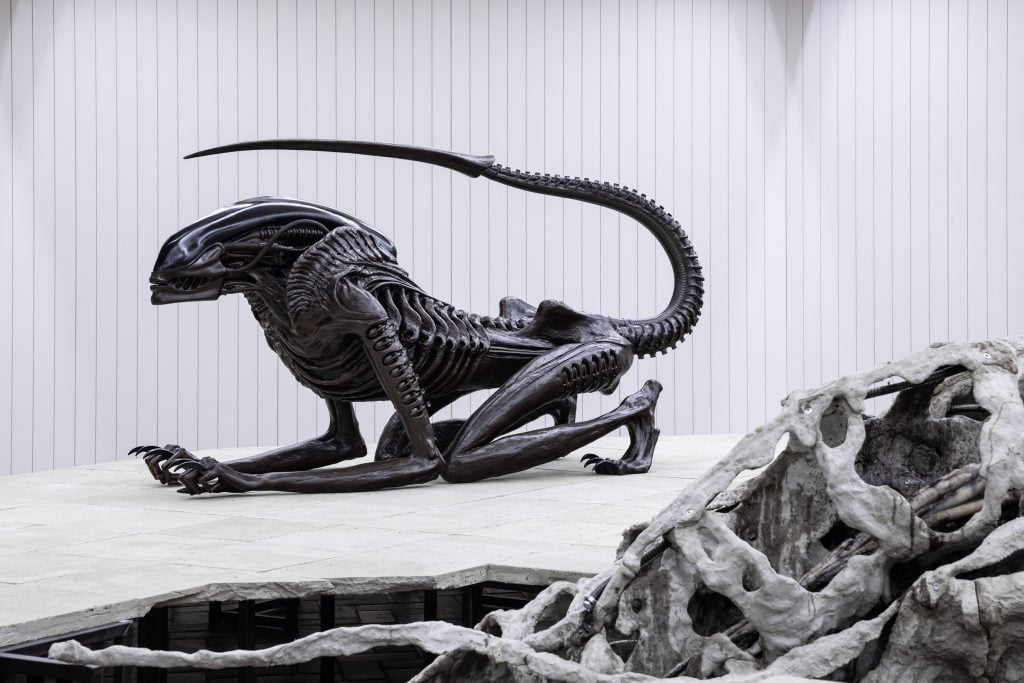
Giger's terrifying vision is the dark fantasy we desperately need right now.

Kate Brown

“You still don’t understand what you’re dealing with, do you?”
That’s the famous question posed by Ash (Ian Holm) in one of the many tense scenes of Ridley Scott’s 1979 film Alien. Ash goes on: “Perfect organism. Its structural perfection is matched only by its hostility… Unclouded by conscience, remorse, or delusions of morality.”
Holms’s character is describing the dark creature at the center of Scott’s masterpiece, an extraterrestrial dubbed the xenomorph. This unforgettably terrifying alien set a new bar for cinematic angst about deep space and existential dream—one that, some argue, has not been matched in the more than 40 years since the film’s release.
The otherworldly creation has an origin story that stems back to a niche in the late 1970s art world. It was dreamed up by a then relatively little-known surrealist artist from Switzerland, H. R. Giger, who created what became the on-film xenomorph years earlier, in a 1976 painting titled Necronom IV.
The detailed work, plus many others that comprehensively chart his practice, is on view in “H. R. Giger and Mire Lee,” an unlikely show at Schinkel Pavillon in Berlin (until January 16, 2022).
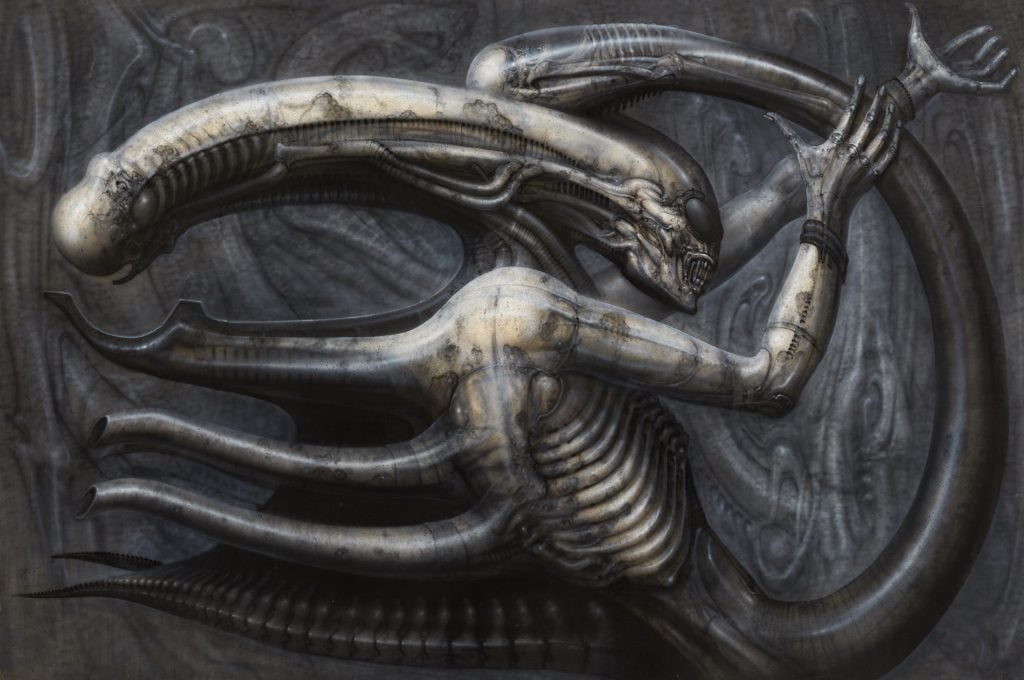
H. R. Giger’s Necronom IV (1976). Photo: Frank Sperling.
The exhibition, organized by Agnes Gryczkowska, has been so well attended that the institution decided to extend it until January 16. It pairs the cult favorite artist alongside Mire Lee, who was shortlisted for the Pinchuk Foundation’s Future Generation Art Prize this December.
Lee’s hypersexual, oozing bio-mechanical sculptures draw out the erotic themes in Giger’s gender-bending works and illustrations, and allow for a new, Feminist reading of his early prototypes. The octagonally shaped venue and its early 20th-century decadence gives a lively juxtaposition to these two artists’s harsh but sleek futuristic visions.
Giger fought for recognition in both the film and art worlds while fitting neatly into neither. Despite having been the inception for Alien‘s antagonist (he designed the creature through all its phases, from egg to super-predator) and the spacecraft and environmental settings of the film, he felt shunned by Hollywood.
“Fox started to dread me,” Giger wrote in a notebook on view in the show, referring to the production studio. “Fox does not want to give me any credit at all.”
His legacy also still has room for growth in the art world. In an era of mass production and AI- and VR-generated images, Giger’s meticulously craftsmanlike works, which were time-intensive and material-oriented, are the dark shot to the heart that we need.
See images from the exhibition below.
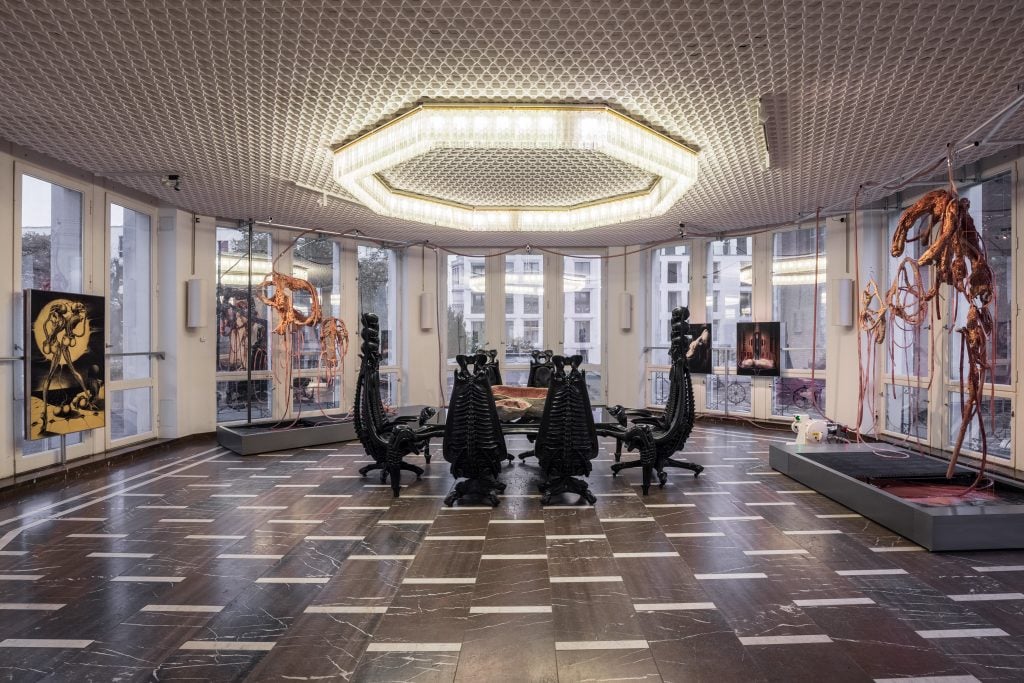
H. R. Giger and Mire Lee at Schinkel Pavillon. Photo: Frank Sperling.
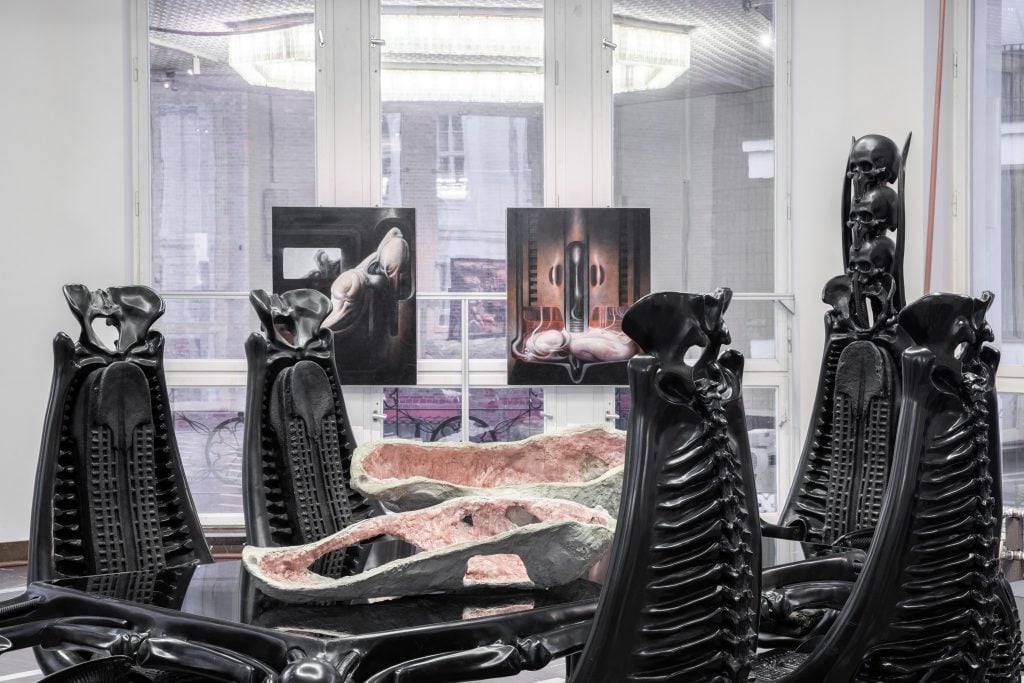
H. R. Giger and Mire Lee at Schinkel Pavillon. Photo: Frank Sperling.

H. R. Giger and Mire Lee at Schinkel Pavillon. Photo: Frank Sperling.
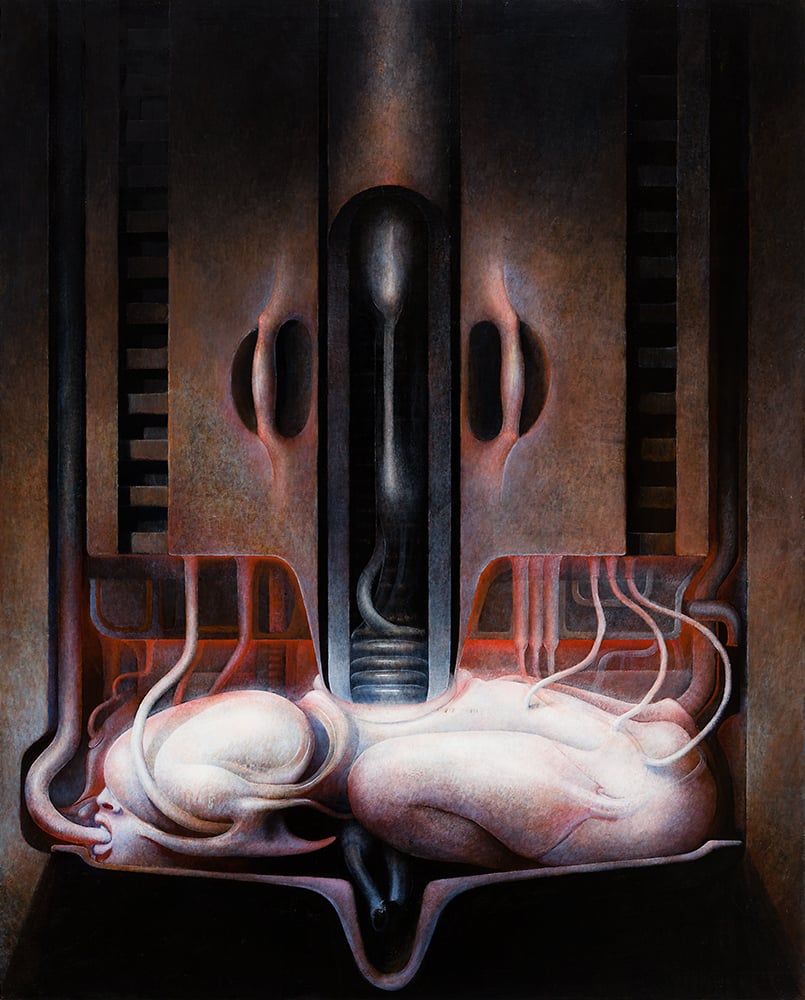
H. R. Giger and Mire Lee at Schinkel Pavillon. Photo: Frank Sperling.
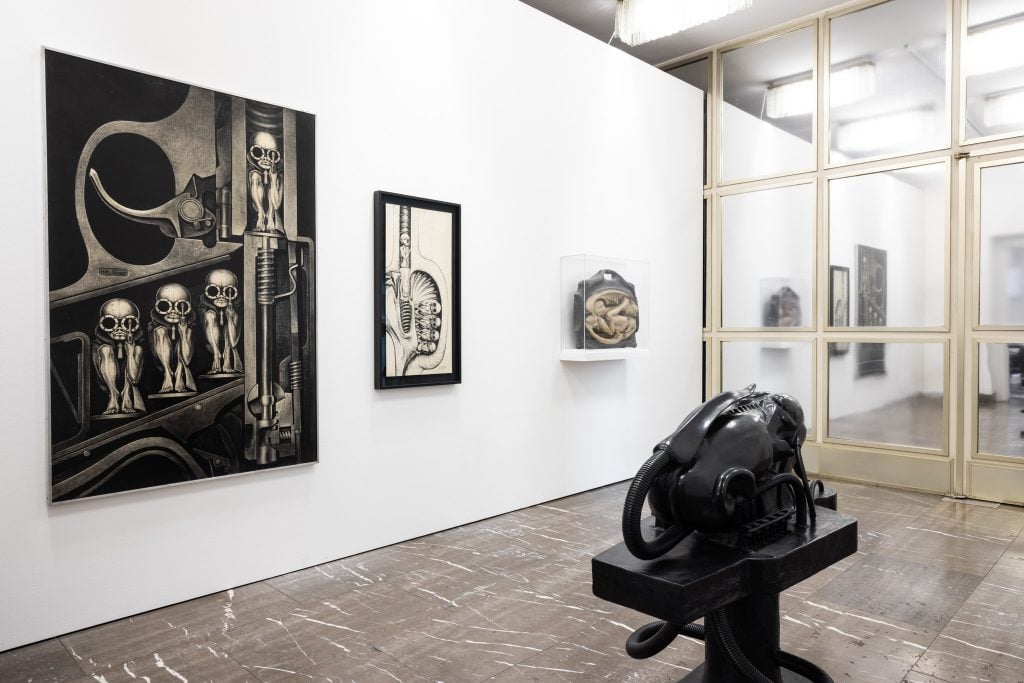
H. R. Giger and Mire Lee at Schinkel Pavillon. Photo: Frank Sperling.

H. R. Giger and Mire Lee at Schinkel Pavillon. Photo: Frank Sperling.
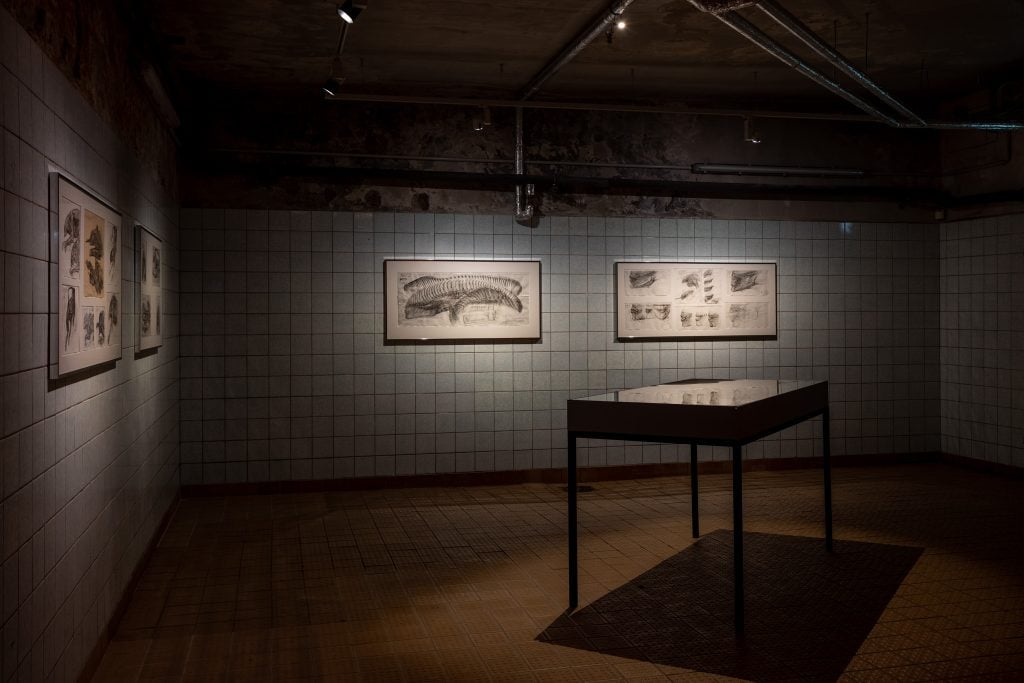
H. R. Giger and Mire Lee at Schinkel Pavillon. Photo: Frank Sperling.
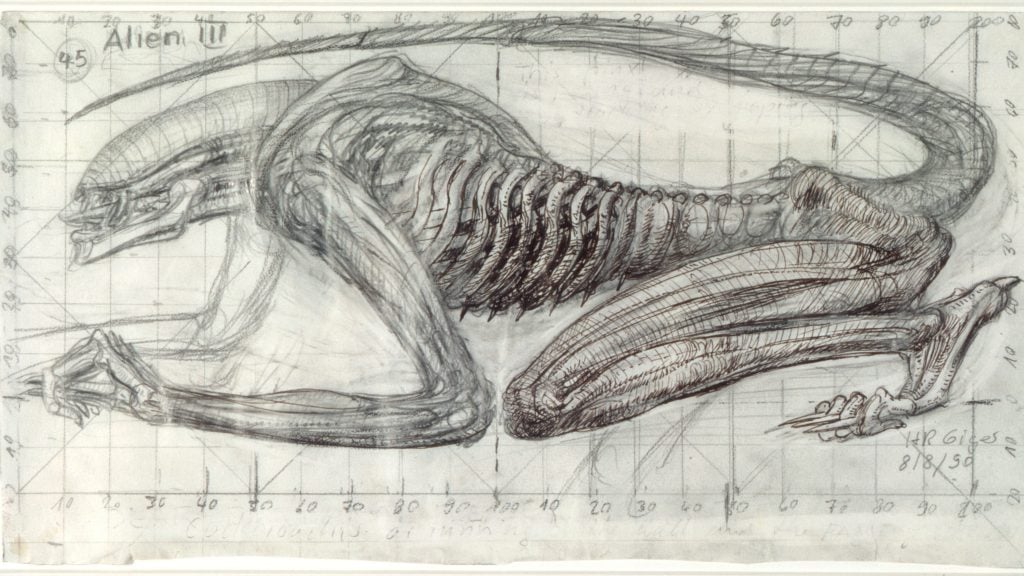
H. R. Giger and Mire Lee at Schinkel Pavillon. Photo: Frank Sperling.